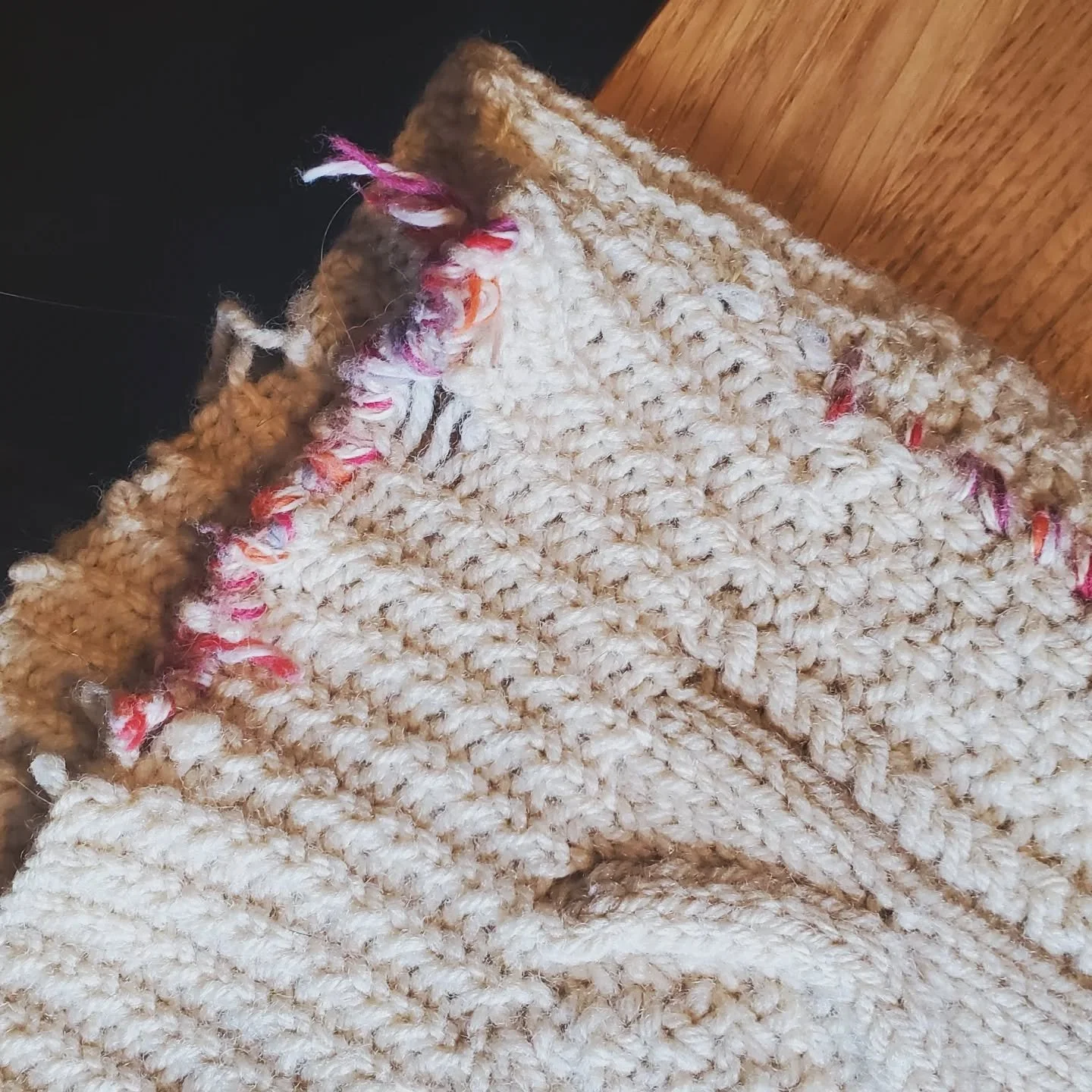In January of 2025, I was asked to revive a fishermen sweater. It had been given to Mollie’s brother when he worked on a boat and it meant a lot to him. He had done some mending himself that defiantly saved the sweater from unraveling but it needed a bit more help…
According the "The Sacred History of Knitting" by Edgar Kieve, aran sweaters like this one I'm reparing are fairly recent (as far as history is concerned) dating to around the 1890s off the coast of Ireland. Traditionally done in an undyed wool with thick cable work like this one.
There are quite a few myths attached to them, (unfortunately) with origins in commercial viability because who doesn't love a good story?
So, even if the moss stitch doesn't or wasn't originally meant to bring the wearer abundance, or the basket stitch meant to mimic a wicker basket for a full catch, or honey comb stitch for luck- well personally I could go on and on about the seeds of folklore but would rather just accept that history and then also say we'll, maybe they should mean all that.
So if I knit one I'll imbue it with my own fledgling folklore. What do you think?
As I worked on it, I needed to remove the previous mending as well as frog (or undo) the ribbing on the bottom of the sweater in order to re-knit it. While knitting the ribbing it was impossible not to think about the person who made it in the first place, what were they like? Did they make the pattern themselves? The act of mending this sweater didn’t just connect me with Mollie and her brother, it connected me across states and oceans to the person who made it, the heard of sheep that grew the wool.
You could say I’m a hopeless romantic but the reason I am able to sit and do such repetitive, tedious, slow tasks is because I am endlessly fascinated and delighted by the way something like knitting connect me to hundreds of years of an evolution of craft. Someone tied the first knot and that was that. We’ve been at it ever since.
I’m very lucky that people like Mollie are willing to trust me with things that are so important to them. I hope I get to touch and extend the life of many more such pieces and through them learn more and more techniques and cultures attached to them.

